So, you’ve had your heartbroken, left but a shell of your former self, and the only way to free yourself from your misery is to pour your pain into your guitar. But how do you make your guitar sound sad? What are some chords that will get you that sound?
In Western Music theory, we are told that major chords sound “happy”, while the minor is “sad”. That sad tone comes from the minor third in the minor chord. However, sometimes just adding a note, or replacing one, can change the entire tone which is certainly the case for some of the saddest chords that I’ll tell you about now.
Some of the saddest guitar chords include the C Major 9th, C Minor 7th, Csus4, Csus2, C Minor 9th, and regular C Minor chords, just to name a few. These chords can be used in other keys too. However, a big part of what determines a chord’s sadness is the musical context as well as how it’s used.
The chords I just mentioned are just a few that can be used to get the melancholy sound you’re looking for. So what we’re going to do next is look at the various chord types, some resources on how to apply them, and also their uses in various types of music. Lastly, we’ll take a look at some common chord progressions, and where to find them.
Guitar Chords That Can Sound Sad
Something I’ve experienced repeatedly over the years and I’ve heard in other places too like in the acclaimed Punkademic Music Theory course, is how context and how we use a chord ultimately determines its sound.
But with that in mind, there are some chords that tend to have the depressed, sad, introverted, or introspective vibe. While context is king, some chords are just sadder than others (more on essential chords here).
One of the most commonly used chords to achieve that sound and emotion is the Major 9th chord which we’ll take a look at now.
1) Maj 9 Chords
Maj 9 chords are constructed of the following notes of the major scale: 1-3-5-7-9. Simply put, it is the major 7 chord with a 9th added and consists of the major triad with an added 7th and 9th (a major 3rd, perfect fifth, major 7th, and major 9th).
As I said in my article on what I think are the most beautiful guitar chords, Major 9 chords do sound full and complex, however, they can miss the mark on the sad sound you are looking for.
This will also be influenced by a lot of other factors in the music. That said, I think this chord almost always has a pretty introspective and sombre vibe.
![C Maj9 - What Guitar Chords Are Sad? [With Examples & Explanation]](https://travelingguitarist.com/wp-content/uploads/2022/04/C-Maj9-What-Guitar-Chords-Are-Sad-With-Examples-Explanation.jpg)
2) Minor 7 Chords
The minor 7 chord construction is 1-b3-5-b7. These numbers are a reference to the notes of the major scale, by the way, 1-2-3-4-5-6-7. This means that the minor 7 consists of a b7 added to an already minor triad (a minor 3rd, perfect 5th, and minor 7th on top).
If the major scale is 1-2-3-4-5-6-7, that means from 1 until 3 is a major third. If you want to make the third minor, you lower it by a semi-tone so you get 1-2-b3-4-5-6-7. The same thing goes for the minor 7th as well, ie, 1-b3-5-b7.
That darkens the tone of the chord and gives it a rather thoughtful and introspective sound which is great for those acoustic indie tracks.
The minor 7th chord is incredibly popular and it’s widely used all over the place in music. You can hear it in jazz, R&B, modern hip-hop and rap, blues, country, metal, pop, and electronic dance music, just to name a few.
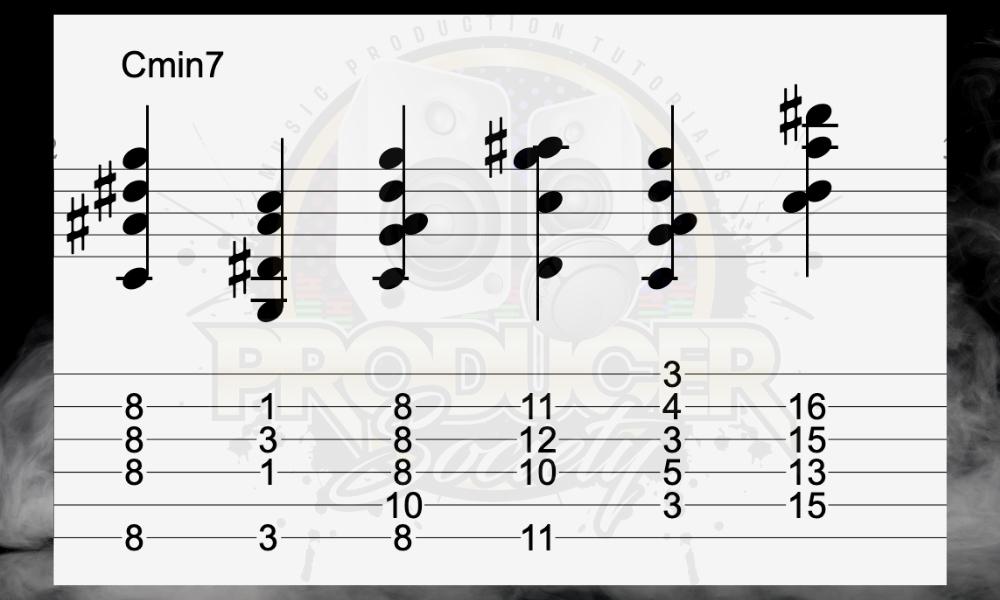
3) Sus4 Chords
As you know, the major chord has the root, a major 3rd, and a perfect fifth – 1-4-5. In the case of suspended chords, it is the 3rd that is “suspended.” In other words, in sus4 chords, the 3rd, whether major or minor, is replaced with a perfect 4th.
This creates tension and a feeling of wanting to resolve. Everyone loves suspended chords because of their versatility.
They are neither major nor minor, so they can be used in so many different contexts and for different purposes. One of the most famous guitar chord progressions ever includes a suspended chord, “Wonderwall,” from Oasis.
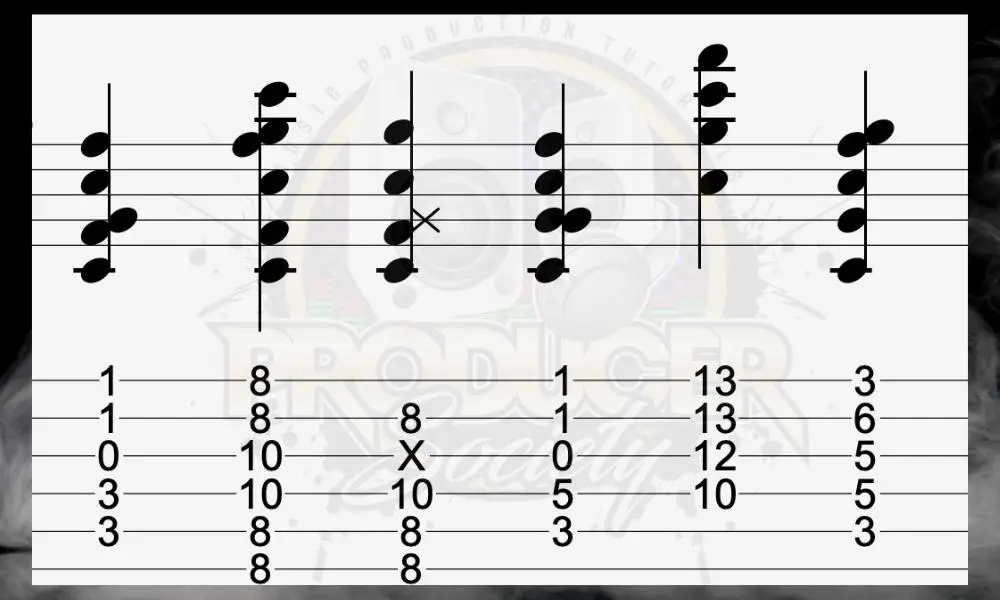
4) Sus 2 Chords
In a sus2 chord, the third – whether major or minor – is replaced not by a 4th like in the case of the sus4 chord, but by a major 2nd. Using the major scale as a reference, a sus2 chord is 1-2-5.
Like the sus4 chord, the third being suspended creates tension and the feeling of wanting to resolve. Because of this suspension, you will almost always find sus chords falling down to or moving towards another chord.
There’s no reason why you can’t use a suspended chord as the tonic, but, it’s more common for the sus2 or sus4 chord to be an “in-between” or a transition chord. As I’ve argued elsewhere on the site, these are guidelines and not rules.
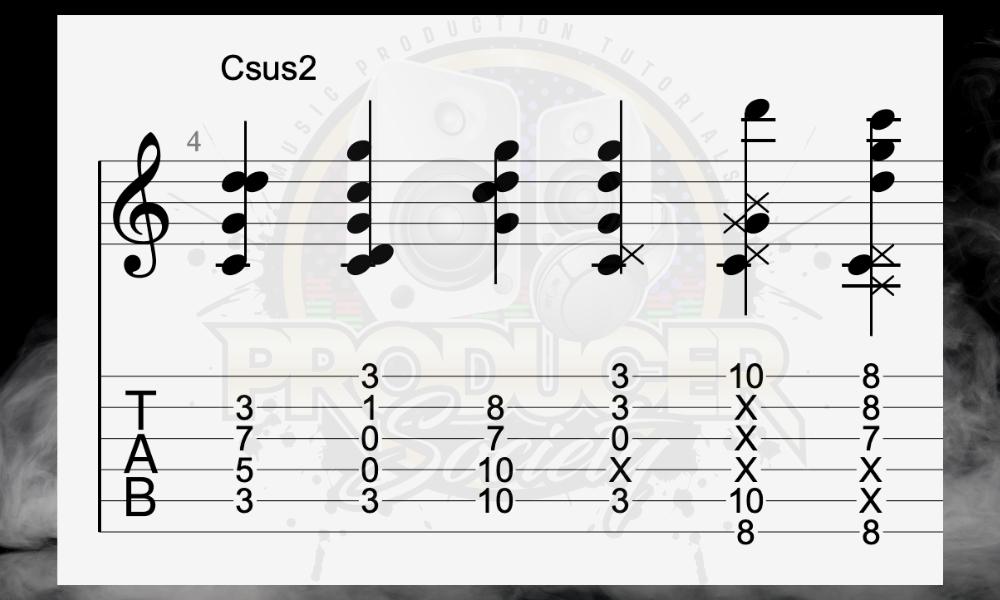
5) Minor 9 Chords
Minor 9 chords consist of 1-b3-5-b7-9. It is a minor third, perfect fifth, minor 7th, and a major 9th. This extends the minor 7th chord with the addition of a 9th. That b3, b7, and 9 combine to give the chord a deeply soulful and melancholic sound.
As this guy points out on his YouTube channel, you can find this chord in all kinds of music but also in Jazz.
This is probably one of my favourite chords to use alongside the Major9th chord and Major/add9. There is just something about that interval I guess that does it for me.
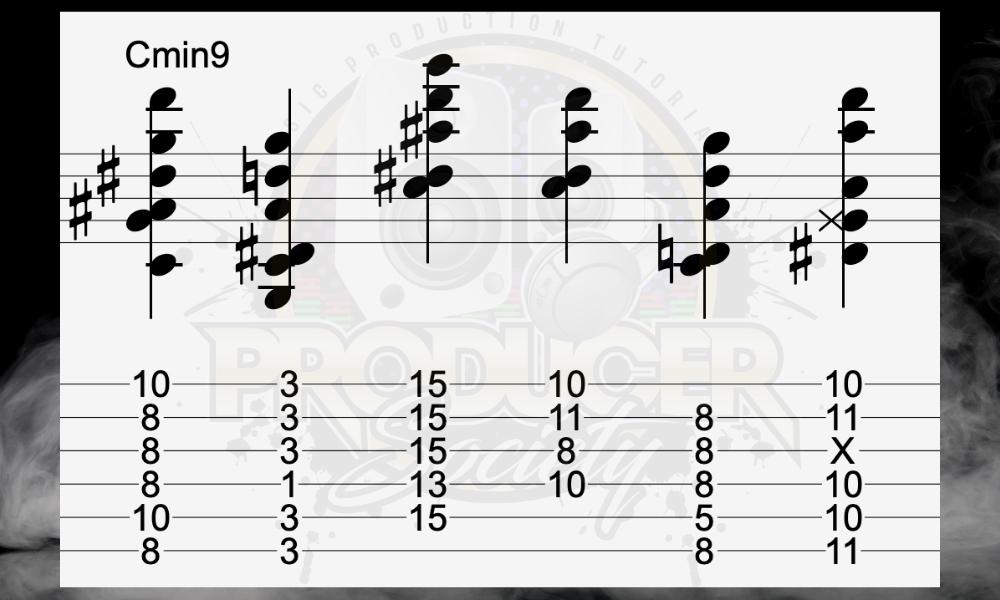
6) Standard Minor Chords
In simple terms, a minor chord is just a minor third and a perfect fifth. The scale degrees are 1-3b-5.
We are often told that major chords are “happy” in tone, and this is largely due to them sounding brighter, due to the major third present in the triad.
As we talked about earlier in the article and in my guide to the 12 main chords on a guitar, the major triad consists of the root, the third, and the fifth. How does this differ from the minor? In a minor chord, the 3rd is a minor or flattened 3rd (b3).
That half step down for the third changes the entire tone of the chord and gives it that dark minor sound that we all know so well.
![Cmin - What Guitar Chords Are Sad [With Examples & Explanation]](https://travelingguitarist.com/wp-content/uploads/2022/04/Cmin-What-Guitar-Chords-Are-Sad-With-Examples-Explanation.jpg)
7) Maj13th Chords
The Cmaj13th is an extended chord that’s made up of the root, major third, perfect 5th, major 7th, major 9th, and major 13th – 1-3-5-7-9-13.
The whole thing is major, all the way through, but I think the major 7th gives it a dreaminess. As I’ve said a few times now in regards to the major 7th interval, it’s “happy” but it’s also slightly dissonant.
And in this case, that dissonance gives it a special sound. The thing about this chord is that the voicings can be particularly beautiful – and different.
For instance, the 2nd one from the right down below is much different from the one on the far left (which is my favorite by the way).
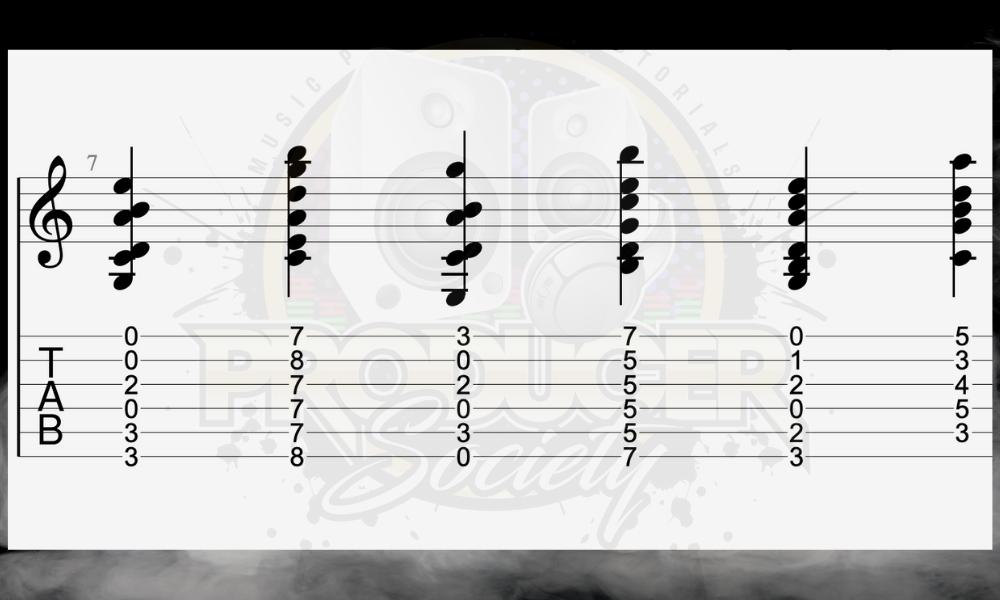
8)13sus4 Chords
The C13sus4 chord is made up of the root, perfect 4th, perfect 5th, minor 7th, major 9th, and major 13th – 1 4 5 b7 9 13. There is no third in the C13sus4 chord or any 13sus4 chord because the suspended fourth takes its place.
Because of the minor seventh interval, perfect intervals, and the major intervals, you get this slightly dissonant, but also slightly introspective sound.

The major intervals give it enough “happiness” that it doesn’t sound too dark, but there is a right amount of “airiness” in there.
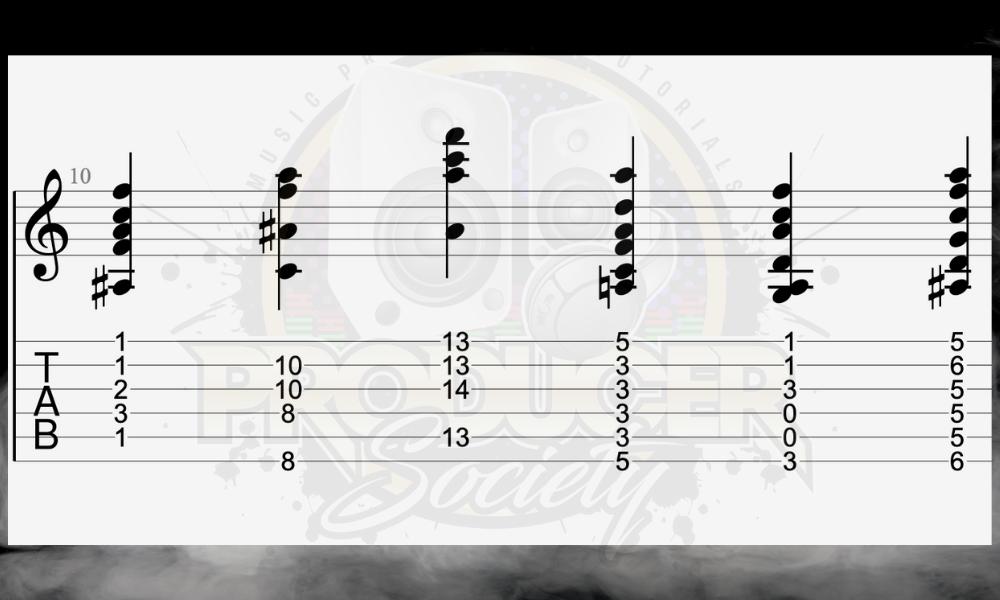
What Makes a Guitar Chord Sound Sad?
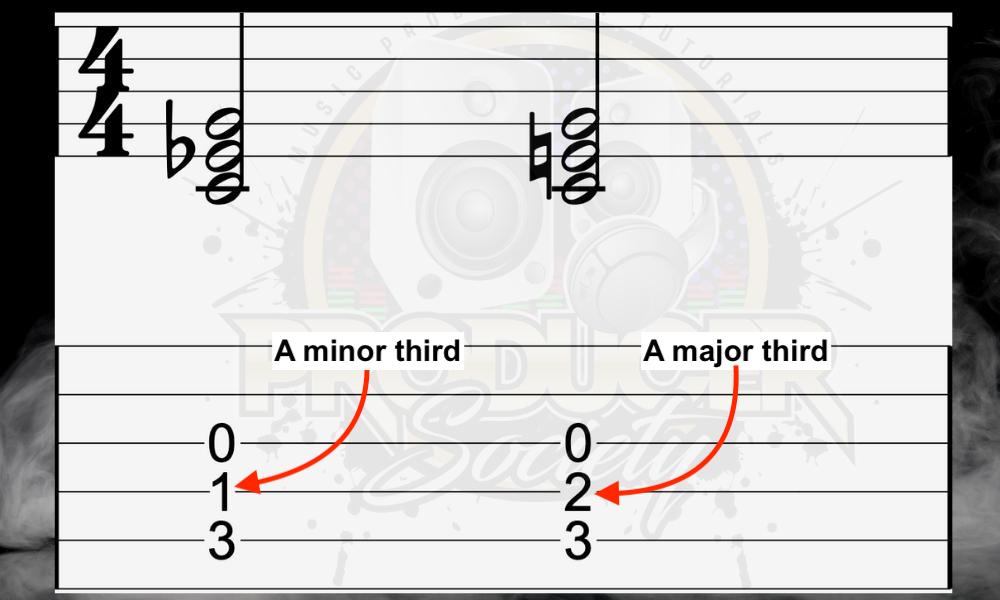
What makes a guitar sound sad is the minor 3rd that replaces the major 3rd. Certain intervals, when mixed together, have a particular sound and quality. On the other hand, if you add a major 7th interval to a major triad, you can get a somewhat melancholy sound but it largely depends on context.
It’s worth stating again that a lot of what makes a guitar chord sound “sad” is the tension between various intervals and notes. Tension is created by dissonance and makes the chord feel “unstable”.
You can hear that tension in the chords we have mentioned so far. Probably one of the most popular chords that have that “tense” vibe is the dominant 7th chord, also known as the 7th chord, like G7, for instance.
It seems like the dominant 7th isn’t nearly as popular in music as it used to be though. I feel like it’s pretty rare to hear a song in the top 20 with a dominant 7th in its progression, although, I could be wrong about this.
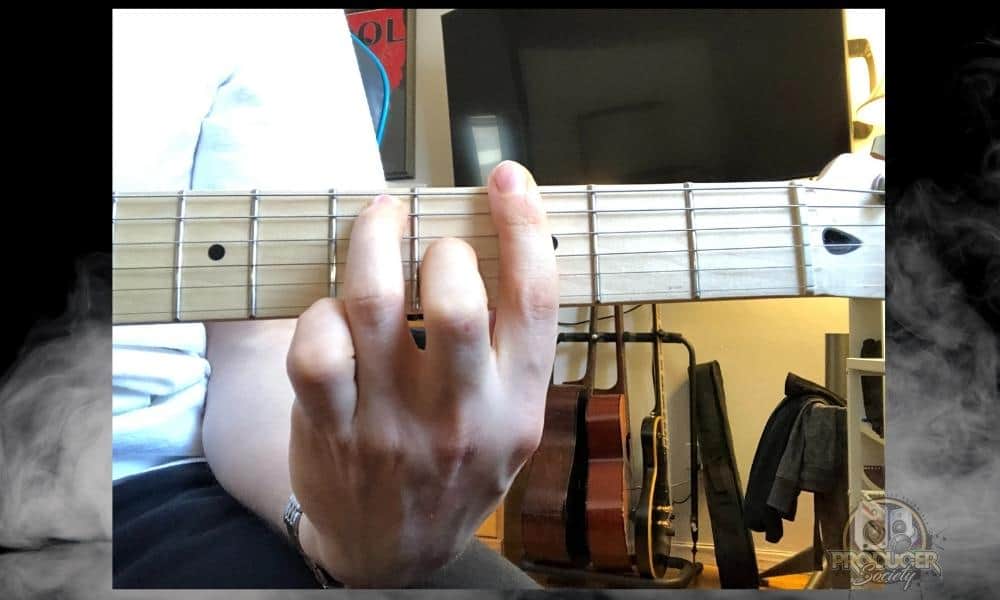
What Is The Saddest Chord?
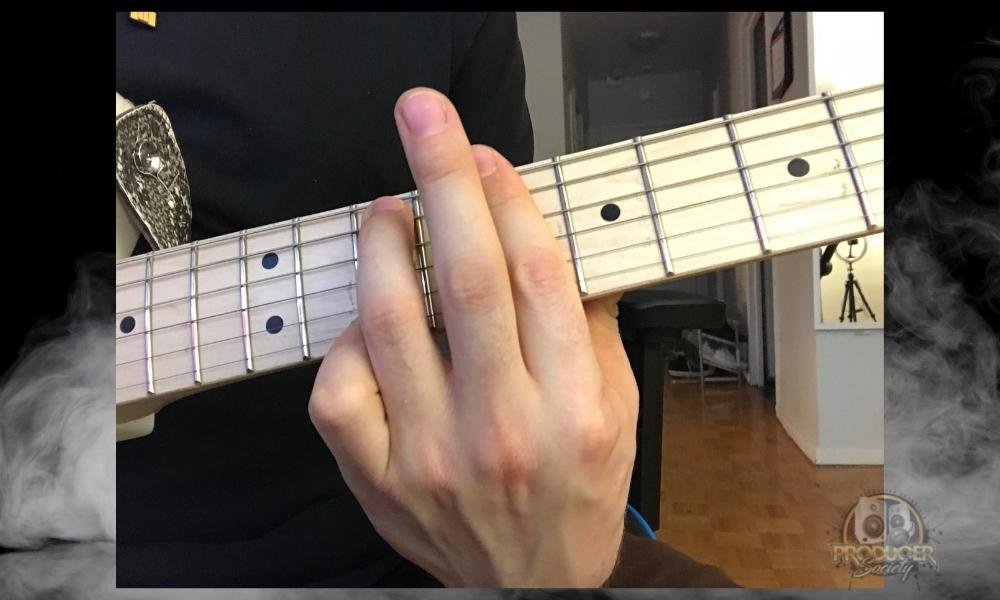
As I said right at the start of the article, what is considered the saddest chord really depends on personal preference and taste, but there are definitely some chords that sound sadder than others.
I would argue that the Minor 9th chords are the saddest chords. Regardless of the context, these chords bring a dark, rich, and melancholy vibe to your songs.
In terms of what I mean by the context, however, other choices like tempo, how the chord is used, time signature, what instrument has been used, and what key signature the song is in, can all play a role in how sad the song sounds to the person listening to it.
A big part of how a chord sound is also its voicings as well. This is precisely why I include so many voicings in my articles on the chords. You get a better idea of what can be done with the chords that way.
Many of them can be modified to create a different character, while at the same time continuing to have the same tonal center, vibe, and flavor.
How Do You Make A Major Chord Sound Sad?
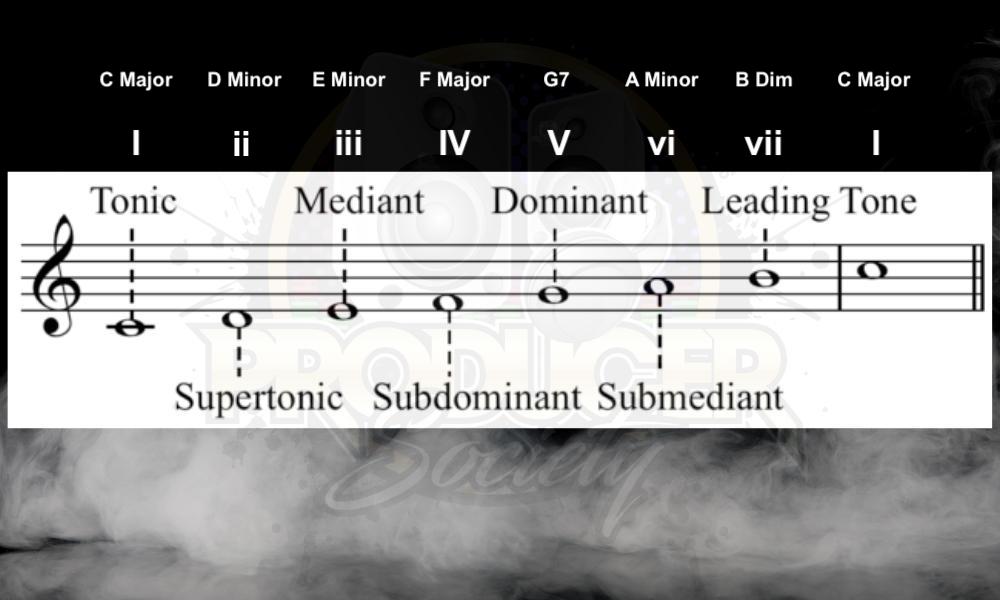
As we’ll talk about again in a second, one way of making a major chord sound sad, right off the bat, is to make the major interval minor or to add a major 7th or major 9th interval on top of it. These are all great ways to make it sound sad.
However, if you want to keep the major chord as it is, but use it in a context that sounds sad, you’ll have to use what’s called the “mediant” chord. As the name suggests, it falls between major and minor in sound. It’s literally a mediator between different sounds.
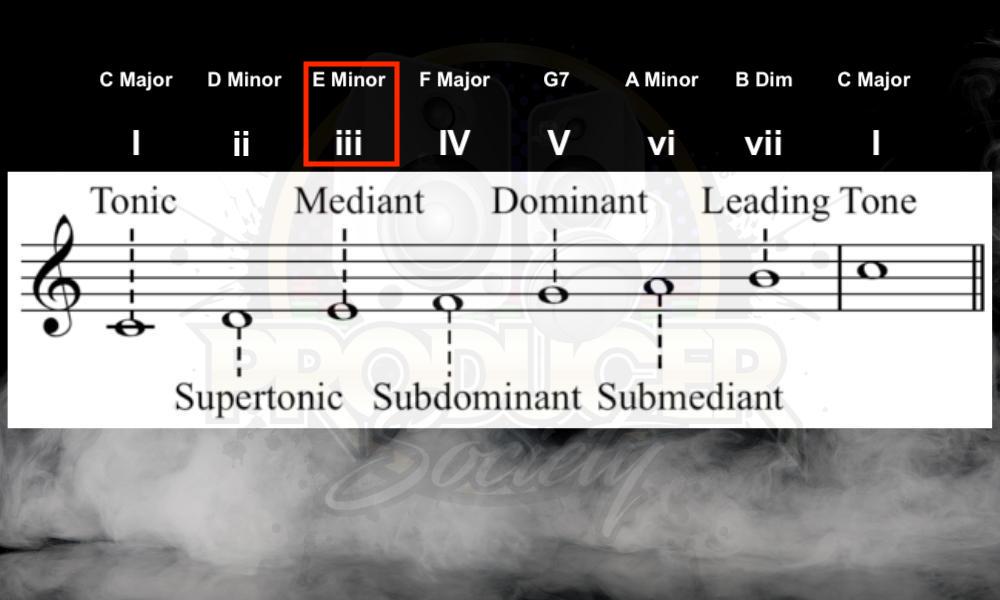
Each note on the scale will have a corresponding chord. In the major scale, the first note will be a major chord, while the third will be minor. So rather than just using the I-IV-V progression which tends to sound super happy, you could throw in the mediant chord.
It would end up looking like this instead, “I-iii-IV-V.” Play with the order and see what you can come up with. Another possible solution would be “i-iii-IV-I-V.” The point is that what chord you introduce into the progression will influence the way the other chords sound.
If we wanted to make what should be a major “happy” progression sound sad, we would move the progression from that root chord to the minor third of the scale, which causes it to sound sorrowful as Sound Signals Studios discussed in his video.
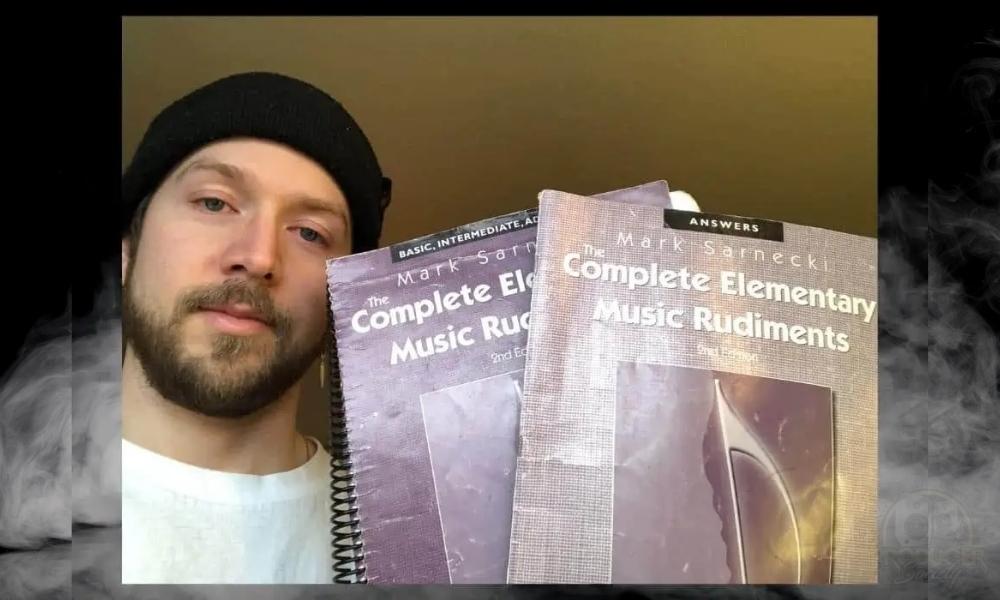
Why Do Major 7 Chords Sound Sad?
The major 7th sounds sad because it takes a triad made of completely consonant notes, the 1-3-5, and adds the major 7th, which is slightly dissonant. This creates tension in the major chord and makes the chord sound slightly somber, sad, introspective, or calm.
When combined with minor 7th chords, major 7th chords tend to produce a really neo-soul, relaxed, spacey, or calm vibe. This is part of the reason why people like to use them in lo-fi which I talked about in an article for Producer Society.
Sad Chord Progressions
There are some well-known chords progressions that will be familiar to your ears, and might help broaden your musical palette:
1) vi-IV-I-V
According to FAChords, vi-IV-I-V is one of the most common chord progressions that was used by female-fronted bands in the 1990s. However, these days, songwriters use it all of the time for many different reasons.
For instance, Akon used it in his song “Beautiful” and U2 also used it in their classic track, “With or Without You.”
2) I-vi-IV-V
I-vi-IV-V is the ’50s progression also known as the “‘Heart and Soul’ chords” is famous for its use in sad songs. From classics like “Stand by Me” to Bonnie Tyler’s Total Eclipse of the Heart to the more recent Alicia Keys’ “Girl on Fire.” This chord progression can also be heard on some great Motown tracks.
3) iii-ii-i
iii-ii-I is the perfect chord progression for adding the just-right hint of melancholy to your bridge or interlude. A perfect example of this is Guns ‘n Rose’s “November Rain.”
4) i-III-v-VI
This is a pretty dark and sombre progression and I used it for my song, “Inversions,” which you can see in the YouTube video down here.
5) I-vi-I
One of the more underrated progressions is just a simple transition between the major tonic and the relative minor. In the case of the C Major scale, it would be the C Major chord and then the A Minor chord, and then back to the C Major again.
What I like about this is you can spice up the progression by using inversions and extensions of these chords to make them sound fresh or interesting. Going back and forth from a C Major to an A minor would probably be boring.
But going from a C Major 9 to an A Minor 9 sounds pretty cool. Keeping it simple is a great way to build the skeleton of what will become a full song.
Important Things to Note About Sad Guitar Chords
1) Factors Other Than Chord Quality Determine Emotion As Well
It’s important to note that the atmosphere created in a song is done with more than just major or minor. How you create feel in a song can be through the meter, chord voicing, and note choices.
You can change the feel of a song merely by changing the instrument that plays it. Sadness is complex, and so is music. How you make your sadness sing will be largely up to you, your ears, and your fingers.
2) These Chords and Progressions Only Scratch the Surface
There are a lot of chords out there. There are so many chords and progressions that this article just opens the door to the world of sad sounds.
My article on the Double Harmonic Major scale (on Producer Society) is another great example of what’s possible when you really dive into theory.
3) You Can Use All These Chords in Different Keys
Something I mentioned earlier but I should definitely emphasize is that the chords I demonstrated throughout this article are, of course, not just limited to the key of C Major. You can use them in all keys.


 Written By :
Written By :
